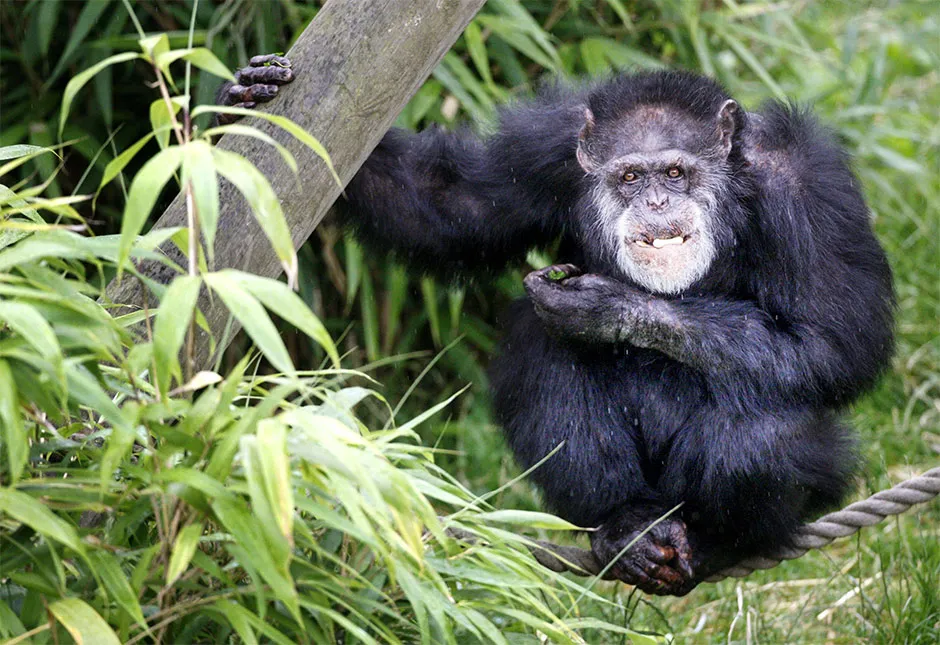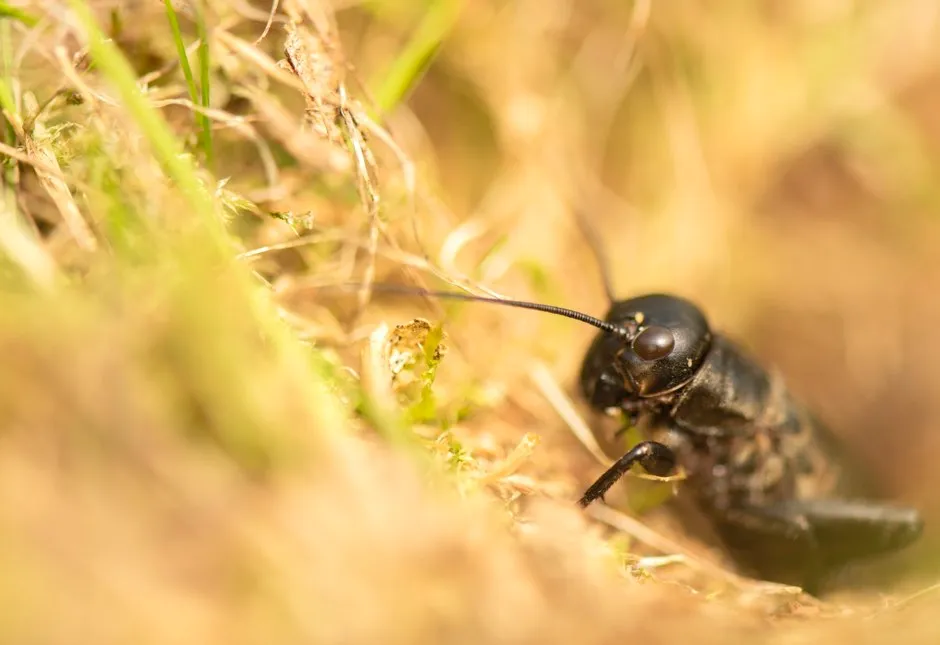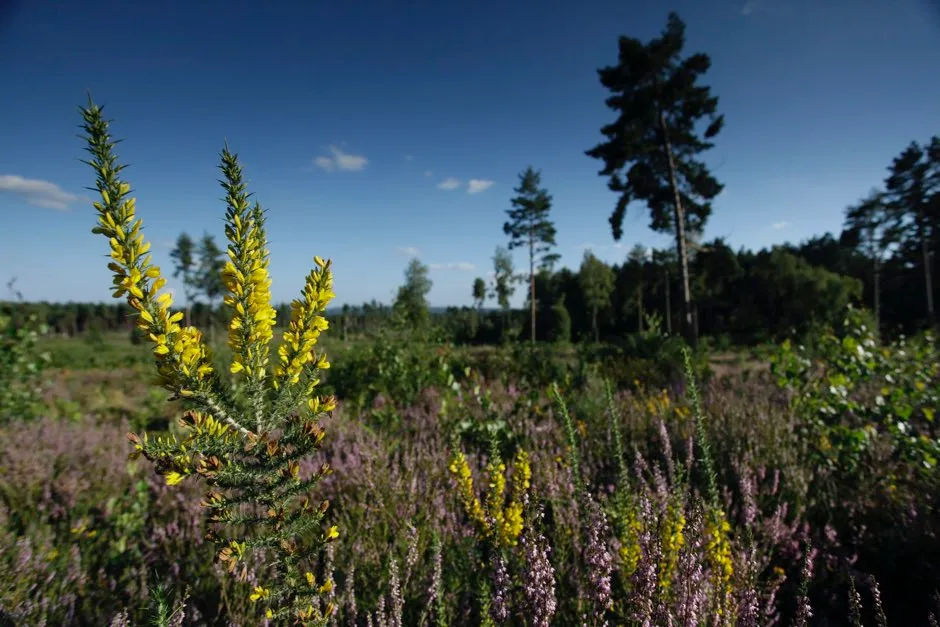1
Chimpanzee lip smacks offer new insight into the evolution of human speech
Scientists have found mouth signals in chimpanzees to have the same pace of human spoken language.
Lip smacks made by chimpanzees follow a rhythm similar to human speech, according to a new study.
Monkeys are known to use this facial gesture, characterised by fast-paced cycles of vertical jaw movement, to communicate with each other.But scientists have, for the first time, observed these mouth signals in a great ape and found their lip smacks to have the same pace of human spoken language.
They believe their findings, published in the journal Biology Letters, could be a “critical step” towards unlocking the mystery of how speech evolved in humans.

Humans are thought to open their mouths between two and seven times per second while talking, with each open-close cycle corresponding to a syllable.
This speech-like rhythm has also been observed in other primate species such as gibbons, orangutans and macaques.However, the lip smacks of African great apes, the closest species to humans, had never been studied.
So a team of researchers, which included scientists from St Andrews University, the University of York and the University of Warwick, looked at data from four chimpanzee populations.
Read more about language:
- Chimpanzee gestures ape features of human language
- Penguin speech follows human language rules
- Origins of human language stretch back 25 million years
- Linguistics: 7 language science books to help you finally understand what comes out of your mouth
They analysed the video recordings of these primates from Edinburgh Zoo and Leipzig Zoo in Germany, alongside footage collected from wild communities in Uganda, including the Kanyawara and the Waibira.Researchers found that chimpanzees made lip smacks while grooming another, opening and closing their mouths at an average of four times per second.
According to the experts, these findings confirm that human speech has “ancient roots within primate communication”.They believe these mouth signals may have played a role in the evolution of a vocal system in humans that laid the foundation for speech.
2
Lockdown reveals success of efforts to help rare field crickets
The RSPB said that with no new releases of the insect at two nature reserves this year, the sound of singing crickets shows previous releases worked.
The coronavirus lockdown has halted efforts to help field crickets – but has helped scientists confirm that their bid to protect the rare insects is already working.
Lockdown rules meant the RSPB had to abandon a final bid to translocate field crickets to restored habitat on two reserves, to help bolster new populations of the threatened species, the wildlife charity said.
But wardens carrying out fire and livestock checks at the Pulborough Brooks and Farnham Heath reserves this month heard field crickets singing at the release sites, a sign that previous releases have led to successful breeding.

Any crickets, which have an annual life cycle, heard calling this year must be the offspring of insects released in previous years.
And it was only because no new releases could take place this year, so no newly introduced crickets could be singing, that scientists could confirm that the previous translocations are working, the RSPB said.
The insects were once the soundtrack to summer evenings, but numbers dropped to just 100 individuals at a single location in the 1980s in the face of changes to how land was managed and loss of their grassy heathland homes.
Conservation work over the past 25 years has put them on the road to recovery, with populations in eight locations across Surrey, Sussex and Hampshire, but they are still one of the UK’s most threatened species.
The RSPB and conservation agency Natural England have been working to boost populations of the crickets since April 2017 as part of the National Lottery-funded Back From The Brink programme to help rare wildlife.
The scheme aims to establish a new colony at the Pulborough Brooks reserve in West Sussex and extend an existing colony at Farnham Heath in Surrey – with the RSPB now hailing the success of the scheme.

Using a technique known as “tickling” with a blade of grass, experts encourage young field crickets, or nymphs hatching underground and beginning to emerge, out from their burrows so they can be caught and moved to new areas.
The scheme allows youngsters from an established colony to be moved to a specially selected area where it is hoped a new colony will be formed.
Conservationists say that creating new populations is vital as it reduces the risk of losing the entire species to a single catastrophe such as a fire.
RSPB senior ecologist Jane Sears said: “There is something quite evocative about the soft chirping of a cricket on a warm summer’s evening.
“Unfortunately, with field crickets on the verge of extinction, we almost lost their song.
“So it was with a heavy heart we cancelled our final chance to bolster the population with the Back From The Brink project, unsure of how our previous attempts to create new breeding sites had fared.
“The news that our new colonies are doing well has given us hope the species can be brought back from the brink.
“We have seen how, with the right conditions, the species can thrive.”
Although the Back From The Brink programme ends this year, the RSPB will continue to monitor field cricket populations.
Read previous weeks' feel-good Friday news: